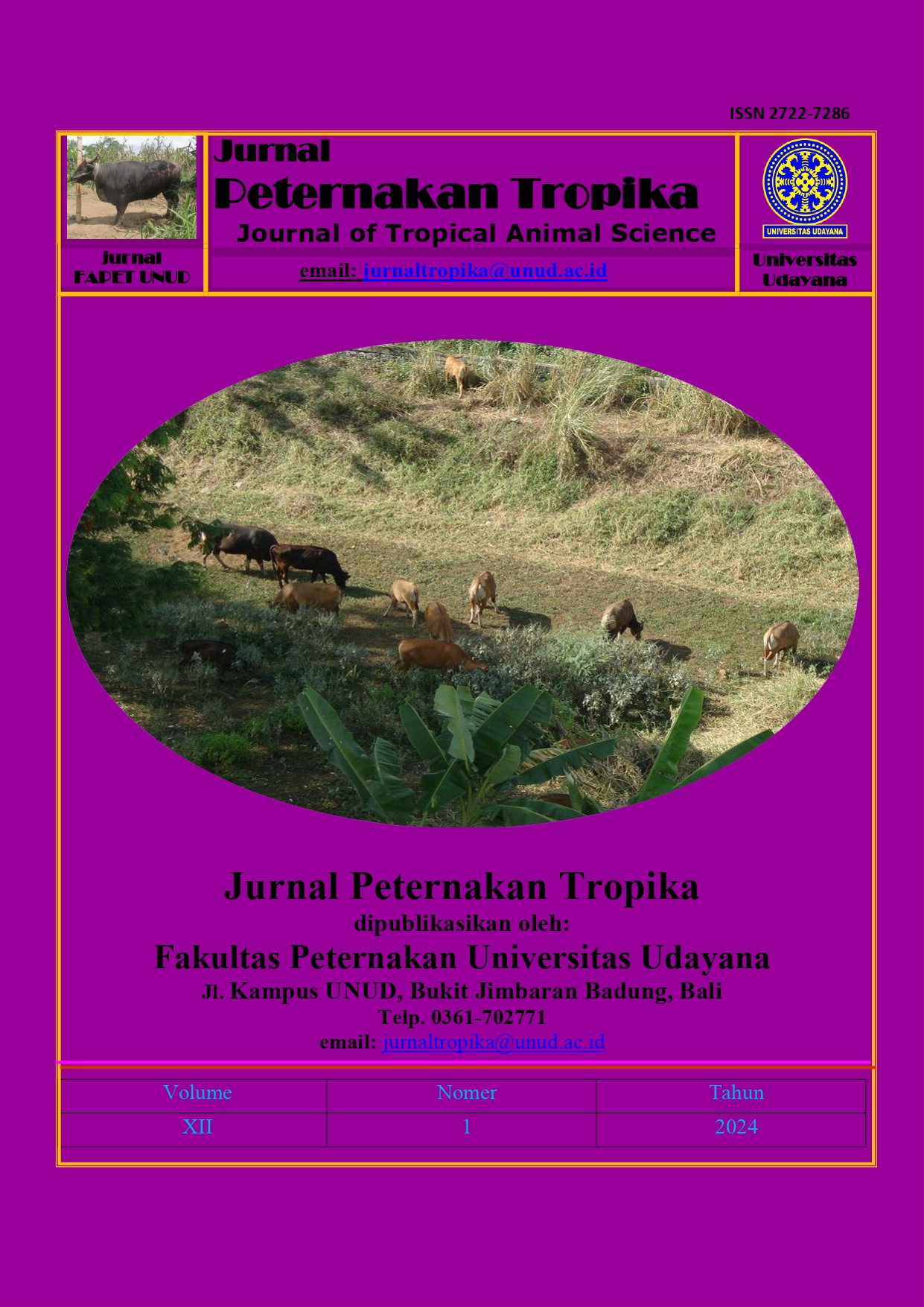EFFECT OF PLANT GROWTH PROMOTING RHIZOBACTERIA (PGPR) ROOT Pennisetum purpureum DOSES ON DIFFERENT SOIL TYPES ON THE GROWTH AND YIELD OF Paspalum notatum FORAGE
Abstract
Plantggrowthppromotingrrhizobacteria (PGPR) isaa groupoof benefecial microba activelyccolonizing the rhizosphere, originating from plant rhizospere. Paspalum notatum is capable of adapting to a wide range of soils, forming extensive root systems, and is drought-resistant, making it suitable for cultivation. This research was conducted to determine the effect and the optimal doses of PGPR on the growth and forage yield of Paspalum notatum. This researchuused a.completely randomizedddesign (CRD) method in a split-plot pattern with two (2) factors: soil type as the main plot and PGPR dose as a sub plot. The PGPR dosage treatments were; 0 ml/l.water as control (P0), 10 ml/l.water (P10), and 20 ml/l water (P20). This study used three types of soil that have different textures and contents: regosol, latosol, and mediterranean soils. The observed variables included growth, yield and growth characteristics. The results showed that regosol soil type provided the best growth and yield compared to latosol and mediterranean soil as a growing medium for Paspalum notatum. PGPR root Pennisetum purpureum showed the best result at a PGPR dose-of 10 ml/l water compared to the dose of 0 ml/l water and 20 ml/l water. The conclusion of the.research is that PGPR dose of 10 ml/l water on regosol and latosol soil, dose of 0 ml/l water on mediteran provided the best growth and yield of Paspalum notatum.






